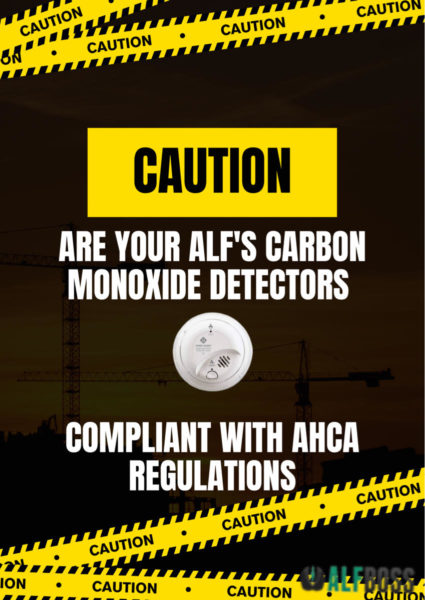
Are Your ALF’s Carbon Monoxide Detectors Compliant with AHCA Regulations?
As an owner or operator of an assisted living facility (ALF), ensuring the safety and well-being of your residents is paramount. One critical aspect of this responsibility is the installation and maintenance of carbon monoxide (CO) detectors. This is particularly important as many facilities are required to have generators, which can be a source of carbon monoxide. Unfortunately, this is a frequently cited issue during inspections, as many facilities either lack these detectors or have non-functional ones.
Understanding the Requirement:
According to Florida Statutes, specifically Section 59A-36.025 – Emergency Environmental Control for Assisted Living Facilities, all ALFs are required to have carbon monoxide detectors. However, the regulations do not provide specific installation details, leaving it up to the facility operators to ensure compliance and safety. For precise guidance, contacting your local authority having jurisdiction is recommended.
Why Carbon Monoxide Detectors are Essential:
Carbon monoxide is a colorless, odorless gas that can be deadly within minutes. Each year, over 400 people in the U.S. die from carbon monoxide exposure not related to fires. This underscores the importance of having functional carbon monoxide detectors in your facility. Here are the primary options for CO detectors:
1. Hard-Wired Carbon Monoxide Alarm: Requires installation into your facility’s electrical system and includes a battery backup.
2. Battery-Powered Carbon Monoxide Alarm: Easy to install and operates independently of the facility’s power supply.
Ideal Placement of Carbon Monoxide Detectors:
Given the large size of some facilities and the distance from the generator, placing detectors in every room may not be necessary. Instead, focus on strategic placement to effectively detect CO gases:
1. Near the Generator: Place a detector within a few feet of the generator to monitor any potential CO leaks directly at the source.
2. Common Areas: Install detectors in common areas where residents and staff frequently gather, such as living rooms, dining areas, and hallways.
3. Sleeping Areas: Install detectors near bedrooms and sleeping areas to ensure residents are protected while they rest.
4. Utility Rooms: Place detectors in utility rooms where boilers, heaters, or other fuel-burning appliances are located.
Installation and Maintenance Tips:
Write the date of purchase on the back of the alarm and replace the batteries every 6 to 12 months, updating the written date accordingly.
Replace the detectors themselves every 10 years.
Clean all detectors with a vacuum or canned air annually.
You can either mount the detector yourself or hire a professional. If you choose to install it yourself, note that a carbon monoxide detector can be placed at any height. The installation process typically involves drilling holes where you want to mount the device and using a hammer and nails to secure it in place. Detailed instructions are usually provided on the back of the package.
Maintaining functional carbon monoxide detectors is not just a regulatory requirement but a crucial measure to ensure the safety of your residents. By staying vigilant and proactive about CO detector installation and maintenance, you can prevent potential tragedies and provide a safer living environment for those in your care.
